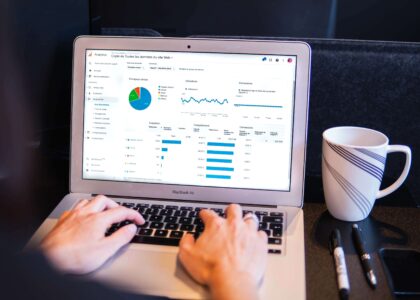Table of Contents
In the fast-evolving world of digital marketing, technical SEO remains a cornerstone of any website’s online success. As we move into 2026, staying on top of technical SEO is critical for businesses that want to maintain optimal website performance and ensure they’re visible on search engine results pages (SERPs). This technical SEO checklist will guide you through the essential technical steps you need to implement to improve your website’s searchability, speed, and overall user experience.

1. Mobile-First Indexing Optimization
As of 2026, Google prioritizes mobile versions of websites for indexing and ranking, a practice known as mobile-first indexing. With the majority of users browsing via mobile devices, optimizing your website for mobile is non-negotiable.
Action Steps:
- Ensure your website is mobile-responsive, meaning it adapts seamlessly to various screen sizes.
- Check that content, images, and navigation are accessible on mobile devices without lag.
- Use Google’s Mobile-Friendly Test tool to identify and fix any mobile usability issues.

2. Improve Website Speed
Website speed remains one of the most important ranking factors in 2026. A slow website can significantly impact user experience and lead to higher bounce rates, which will ultimately hurt your SEO efforts.
Action Steps:
- Compress images and use next-gen formats like WebP.
- Implement lazy loading for images and videos.
- Use browser caching and Content Delivery Networks (CDNs) to reduce server load times.
- Check website speed regularly using Google PageSpeed Insights and make necessary optimizations.

3. Structured Data and Schema Markup
Adding structured data and schema markup to your website’s code allows search engines to understand your content more deeply. This can result in rich snippets and enhanced search results, increasing click-through rates and user engagement.
Action Steps:
- Use Schema.org to mark up key elements like articles, product pages, reviews, and local business information.
- Test your structured data with Google’s Rich Results Test tool to ensure it’s implemented correctly.
- Focus on marking up FAQs, ratings, and how-to content to gain more visibility in search.

4. Optimize Crawlability with XML Sitemaps and Robots.txt
For effective crawling and indexing, it’s essential to make sure search engines can navigate your site easily. An updated XML sitemap and a well-configured robots.txt file ensure that search engines understand which pages to crawl and which ones to avoid.
Action Steps:
- Regularly update and submit your XML sitemap to Google Search Console.
- Ensure your robots.txt file is configured correctly to prevent search engines from indexing irrelevant or duplicate pages.
- Use the “Fetch as Google” tool in Google Search Console to check how search engines see your pages.

5. Secure Your Website with HTTPS
Security is a significant ranking factor in 2026. Websites that use HTTPS are considered more secure and trustworthy, and Google gives them an edge over non-secure sites in search rankings.
Action Steps:
- Ensure your website is fully SSL certified and switched to HTTPS.
- Check for mixed content issues where some elements (like images or scripts) are loaded over HTTP instead of HTTPS.
- Use tools like SSL Labs’ SSL Test to verify that your SSL certificate is correctly configured.

6. Fix Broken Links and Redirects
Broken links (404 errors) and improper redirects can hinder the user experience and hurt your SEO rankings. It’s essential to regularly audit your site to fix these issues.
Action Steps:
- Use tools like Screaming Frog or Ahrefs to identify and fix broken internal and external links.
- Implement 301 redirects for any moved pages to maintain link equity and prevent users from encountering 404 errors.
- Ensure there are no redirect chains (multiple redirects between pages), as these can slow down page loading times.

7. Optimize for Core Web Vitals
Google’s Core Web Vitals are essential indicators of a website’s user experience, focusing on load time, interactivity, and visual stability. These factors directly affect rankings, especially in mobile search.
Action Steps:
- Focus on the three main Core Web Vitals:
- Largest Contentful Paint (LCP): Optimize your site’s loading speed by reducing server response time and optimizing images.
- First Input Delay (FID): Ensure your site responds quickly to user interactions.
- Cumulative Layout Shift (CLS): Minimize unexpected layout shifts by ensuring all media elements have reserved space.

8. Internal Linking and Site Architecture
An optimized site architecture ensures search engines can easily crawl all pages and users can easily find the information they need. Internal linking plays a key role in distributing link equity and guiding users to important pages.
Action Steps:
- Use a clear, hierarchical structure for your website’s navigation and URL paths.
- Create an internal linking strategy that connects related pages together to spread link equity and make it easier for search engines to crawl.
- Ensure your website has no more than 3 clicks to access any page from the homepage.

9. Monitor and Fix Duplicate Content Issues
Duplicate content can confuse search engines and lead to penalties or reduced visibility in search results. It’s important to identify and resolve any duplicate content issues on your website.
Action Steps:
- Use Google Search Console to identify duplicate content issues under the “Coverage” section.
- Implement canonical tags to indicate the preferred version of duplicate content.
- Regularly audit your content for similarities, especially across product pages, blog posts, and landing pages.

10. Ensure Proper Indexation of Important Pages
In some cases, you may want to prevent certain pages (like thank-you pages or login pages) from being indexed. On the other hand, key pages like product pages or blog posts need to be indexed to rank in search results.
Action Steps:
- Use the noindex tag to prevent non-relevant pages from appearing in search results.
- Regularly check Google Search Console for indexation issues and resolve them promptly.
- Submit an updated sitemap whenever you launch new pages or make changes to existing content.
Conclusion
Maintaining optimal website performance in 2026 requires a consistent focus on technical SEO. Following this technical SEO checklist will ensure that your website is fast, secure, and fully optimized for search engines. By addressing mobile optimization, improving site speed, implementing structured data, fixing crawl issues, and focusing on Core Web Vitals, you can future-proof your site and drive better rankings, traffic, and user engagement.
FAQ: 2026 Technical SEO Checklist for Optimal Website Performance
1. What is technical SEO and why is it important in 2026?
Technical SEO involves optimizing the infrastructure of your website so that search engines can crawl, index, and rank it effectively. In 2026, with growing competition and evolving algorithms, technical SEO ensures your site loads fast, remains secure, performs well on mobile, and follows Google’s latest best practices.
2. What are the most important elements of a technical SEO checklist in 2026?
Key components include:
1. Mobile-first optimization
2. Page speed and Core Web Vitals
3. Secure HTTPS implementation
4. Structured data/schema markup
5. XML sitemap and robots.txt optimization
6. Fixing broken links and redirects
7. Internal linking structure
8. Canonicalization and duplicate content handling
9. Ensuring proper indexation of critical pages
3. How do Core Web Vitals affect SEO rankings in 2026?
Core Web Vitals are a set of metrics Google uses to evaluate user experience, focusing on load speed, interactivity, and visual stability. Poor Core Web Vitals can lead to lower rankings, while optimizing them can improve visibility and engagement on your website.
4. How often should I audit my website’s technical SEO?
It’s recommended to perform a full technical SEO audit at least quarterly. However, after major changes (e.g., new website design, CMS migration, or launching new pages), an immediate audit is necessary to identify and resolve potential issues.
5. How can I check if my website is mobile-friendly in 2026?
Use tools like Google’s Mobile-Friendly Test or PageSpeed Insights. These tools will analyze your site and provide specific feedback on mobile usability, including font sizes, tap targets, and content width.
6. What is schema markup and why should I use it?
Schema markup is code you add to your site to help search engines better understand your content. In 2026, it’s essential for rich results like FAQs, product reviews, events, and more. Implementing schema increases your chances of standing out in the SERPs.
7. How do I fix broken links on my website?
Use tools like Screaming Frog, Ahrefs, or Google Search Console to crawl your website and find broken links (404 errors). Replace or redirect broken links using 301 redirects to relevant content to preserve SEO value.
8. What’s the difference between a sitemap and robots.txt file?
1. An XML sitemap lists all the important URLs you want search engines to index.
2. A robots.txt file tells search engines which parts of your site they should or shouldn’t crawl. Both are critical for technical SEO and must be configured correctly.
9. Can technical SEO improve my site’s loading speed?
Absolutely. Technical SEO includes speed optimization techniques like image compression, caching, lazy loading, and code minification—all of which directly improve loading times and user experience.
10. What tools are best for a technical SEO audit in 2026?
Top tools for technical SEO audits include:
1. Google Search Console
2. Google PageSpeed Insights
3. Screaming Frog SEO Spider
4. Ahrefs Site Audit
5. GTmetrix
6. SEMrush Site Audit Tool












